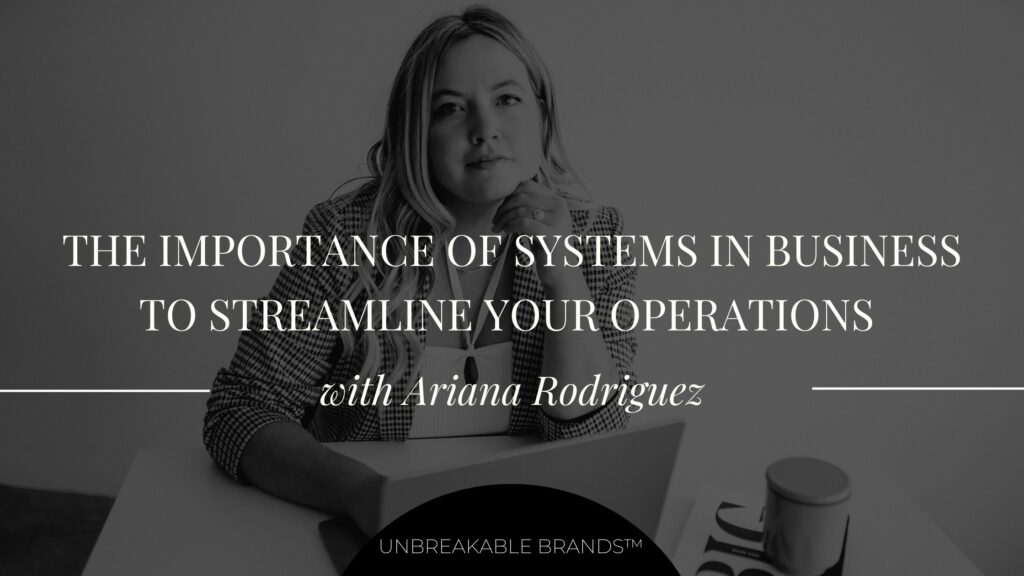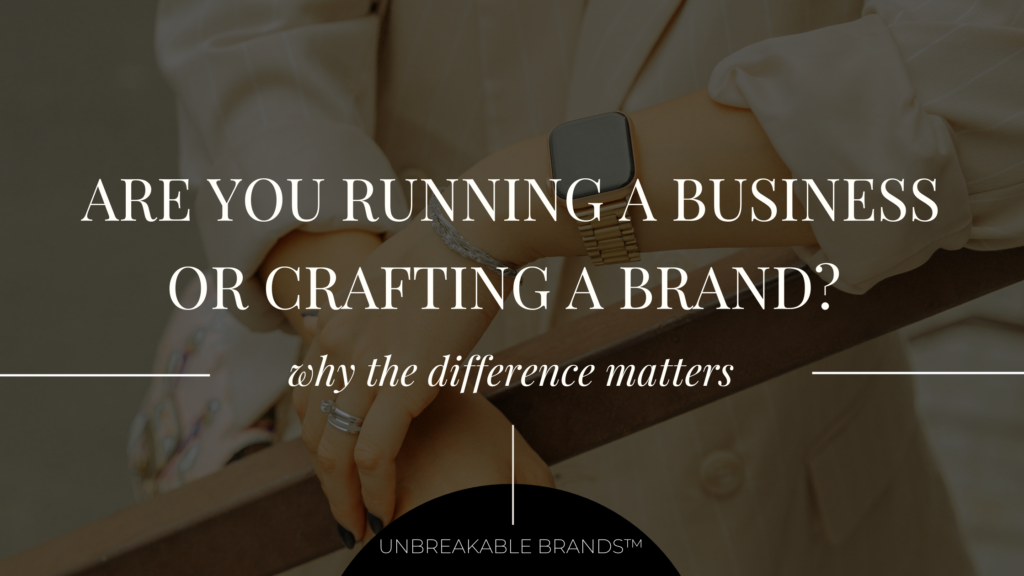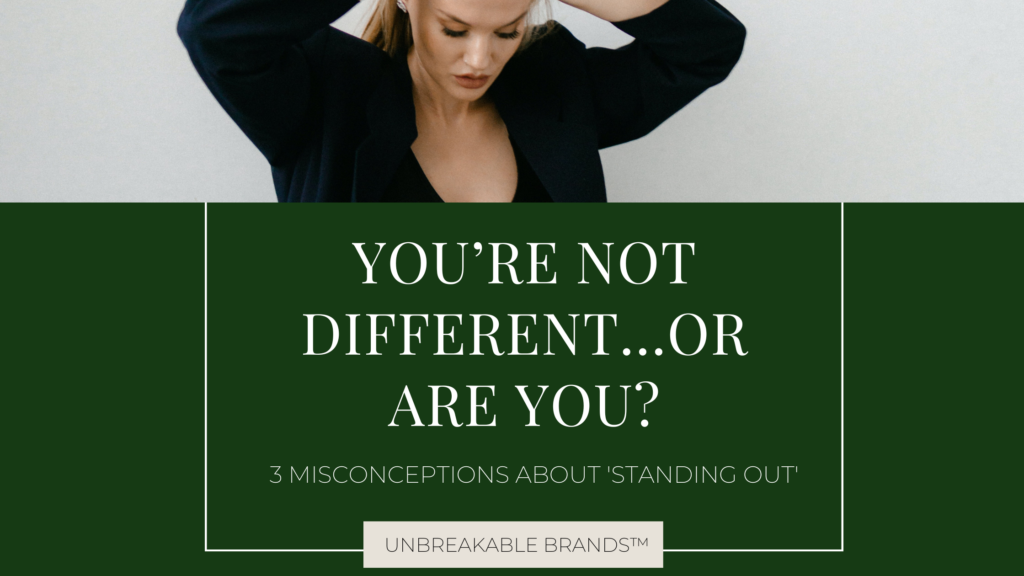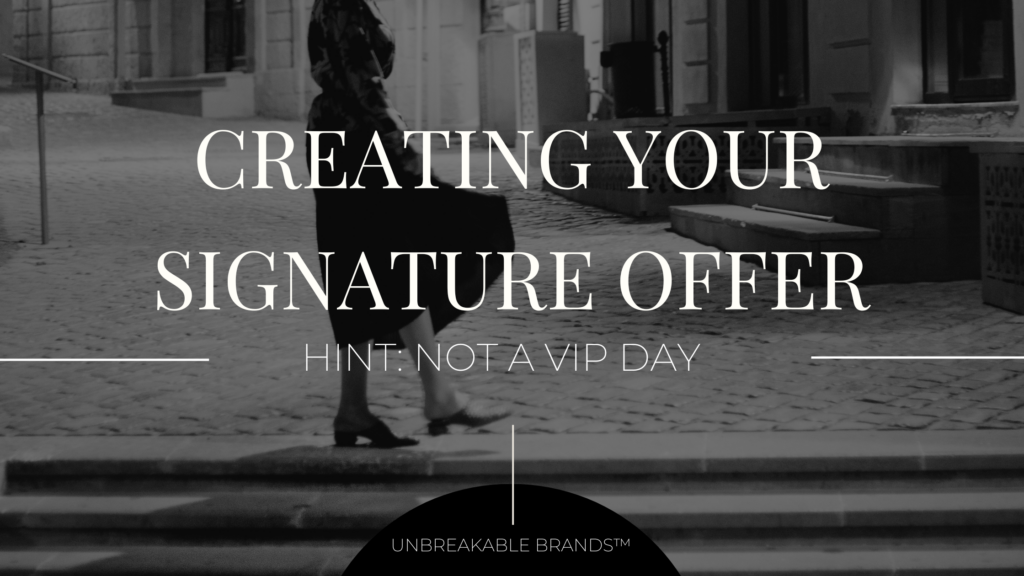Driven by a passion for social justice and empathy, Ariana is on a mission to empower BIWOC-led (Black, Indigenous, Women of Color), mission-driven companies. Providing C-suite level support and operational foundations, Ariana aims to help businesses scale sustainably and make their mark on the world. Drawing from personal experiences, including a background in tech solutions and understanding ADHD’s challenges, Ariana offers compassionate guidance. The goal is to create a more inclusive entrepreneurial landscape, where creativity and purpose meet the tools needed to flourish, changing the world one business at a time.
Welcome Ariana
You need to be able to remove yourself from the business or else you’re going to give yourself another job.
– Ariana Rodriguez, Founder – Systems Strategist
Here’s what you can expect to hear in this episode:
- Ariana’s journey
- What is a systems strategist and what they do
- Gauging when it is the right time to work with one
- Creating systems that all
- ow you to take a step back
Resources Mentioned In
This Episode
What was your journey to building the business you have today?
I like to say that I became an accidental entrepreneur. I was working in operations at a New York City hospital system and really in a very similar field. I was translating operational needs to the tech team and being that go between to make sure that certain projects got off the ground.
I started offering online consulting services for like shits and giggles for a little bit of extra cash on the side, as a creative outlet. And really loved it. And really loved the freedom that came with working with more creative businesses, with smaller businesses that didn’t have as much of a hierarchy, but also needed just as much support.
For the most part, small businesses are being run by two, three, four, or five people. And are wearing multiple hats and may not have that operational foundation that these large corporations have, right? So eventually I left my nine to five and started doing this full time and have not looked back.
What does being a systems strategist mean? What does it look like?
I look at how you run your business basically, right? I look at all the back end and clean up what I like to call like the dirty little closet that everybody throws your stuff in, which is like Google Drive.
When it comes to running your business, you have certain ways that you like to do things, right? Everybody does. Everybody works a certain specific way. They have workflows. They have a way that they like to treat their clients, that they like things done. Those are called your processes.
What a lot of people don’t know is how to create efficient processes that will get their work done quicker, that work better with how they work, how their own brain works, and that will maximize the amount of time that they have.
I’m here to show you how to do that by leveraging my traditional corporate operations experience, by leveraging my love of tech, by leveraging a myriad of different tools and things, I’m here to kind of make that as easily understandable and digestible for you as the CEO.
How do you approach analyzing and identifying areas and systems that can be improved and implemented?
So we start off with a brain dump. I find that my people are very creative, are very big vision, big ideas kind of people – you kind of have to be it to be a CEO. So I let you brain dump while I organize.
For me It’s like putting together a little bit of a puzzle So as you’re talking I’m piecing together an idea of how your business actually runs like I’m literally painting a picture. I have a platform called Lucid that we build an actual 2D visual representation of all of your processes.
But what we are really doing is diving deep into what an ideal client journey looks like for you. And I don’t mean like client journey, like how to apply – the client journey within your containers.
What does an ideal state, what would it look like for you, a day to day for your VA? What would your editors be doing on a daily basis?
What are the other people in your agency, in your business, what are they doing and how are they supporting that mission of your business? So we take all that data dump, create a 2D visualization and from there really come up with recommendations, action items, ways to implement things to kind of reduce the load of work that you and your team are doing while also increasing customer experience.
Can you share some tips or strategies for people who are looking to streamline?
I’ll share a personal story actually, cause I still do this in my own business, right? I was just talking on stories the other day, people think that just because I’m a system strategist that my operations are set, signed and delivered.
I’m like, no, as your business grows, you need to upgrade and change and iterate your own processes. Another story, another time. But when I was first starting out, I was still learning all about the tech also, right?
Because I came from corporate, came into the online space, and the tech is very different, right? Where we were using Microsoft Project in corporate, we’re now using ClickUp and Notion and Asana.
One of the big things that people were always talking about was Dubsado. So I invested in this great little course that taught me little bits and pieces of a bunch of different tech. And I started putting together a Dubsado onboarding workflow for clients.
And halfway through of me setting this up, I paused and looked at what I was doing. I was like, why do I have so many emails? Why am I writing so many emails to these people? Why are there so many checkpoints?
And I realized that I was just filling in these blanks of this template process that someone had given me that doesn’t actually align with how I want to do business. Like had I been in the receiving end of all those emails and communications, I would have been overwhelmed and been like, this is not for me.
So I reevaluated what I wanted my onboarding experience to be like, and cut out most of those communications, shortened the emails, made them a little bit meatier, and what I think is now a much more streamlined onboarding process.
And then what I’ve also done and what I tell my clients to do, especially when you’re onboarding clients, onboarding new people, is to repeat the information in different spaces. So if you have a client portal and a welcome email, that same information should be in both places so that people can refer to them and see them when they are ready for it.
People are not going to always see that information that first time. As a system strategist, I work with tech, people need to send me all of their passwords, et cetera. I have that, send me your passwords via LastPass in like four or five different places in my onboarding process. Because that’s usually the last thing that people do.
I have it in my welcome email, I have it in my client portals, I have it everywhere. Because I know people are going to forget to do this, I have it in my client homework, there’s four different places people can find this.
And it still takes people time to do it because it’s a cumbersome thing, it’s something that needs to be reminded, it’s something that needs to be pushed. So all of that to say, one, where can you simplify what you’re doing? Where are you over-complicating this process and we can just simplify things?
Two, where have your people had issues following directions or had questions for you about your own process and how to work with you and answer those questions preemptively, right?
And then three, how can you maximize your communication with these people? How can you get as much information into a singular place as possible so people aren’t ping ponging back and forth?
Also, if you’ve worked in corporate, everything is so manual. You have to write the emails, you have to set the calendar, you have to do this, you have to do that. And the idea that now as online entrepreneurs, there’s so many tools that we can leverage to make our lives easier, to make us more productive, to make us feel like we have a team of 10 when we have two.
And people don’t know what they don’t know. So by the time they come to me, I’m like, yeah, we can totally automate the creation of and sending out of the Google Drive folder for your clients so that you don’t have to do that with all the different folders that you need to have in there to organize their work.
How do you work through the mindset of “it’s just easier if I do it?”
I have so many of my clients in that space. So the majority of the people that I work with are either agencies that are looking to scale or people that have just scaled and are like, I have no idea what I’m doing. Or like my business is now at a standstill cause I’m the bottleneck.
And don’t get me wrong, this happens to everybody no matter what, right? Like I was a bottleneck for my own business for like a couple of months, like earlier this year. And I
came out of it pretty quickly, but everyone goes through this.
So things to know is that if you don’t give proper directions or have a proper process or have an SOP of how you do things, no one will be able to pick things up and work the way you want them to. If you can communicate how you want things done, no one, no matter how good of a hire they are, they will not be able to do it for you.
It’s just not possible. No one can read your mind. Right? So what I like to tell my people, if you’re struggling with hires and you’re like flowing through hires very quickly, it’s not a hire problem.
It’s usually a, we need to put in like processes and operations and policies in place. And the problem with that is that it’s not sexy. It’s not a fast thing, right? People are like branding is sexy. Give me all the branding. It takes me three months.
It can take you three months to just set up the internal processes and then you have to test them to make sure that they work, right? So my agency just took the last quarter to redo all of our client facing processes. To redo all of them, to make sure that I’m not the bottleneck in the work that we’re doing.
We are now in that testing phase. So far things are going great. We’re tweaking here and there, but things are going great. And also testing is normal. You have to test things out because you’re creating this in a bubble, right? You’re creating these processes from experience, but basically in a bubble. So you gotta test them.
So now my agency’s testing them out, making sure that they’re viable, making sure that they’re working. And now that I have the head space and I’m no longer the bottleneck, I’m able to think about other processes in the business.
My team is mainly executing our client work so now I’m able to be like, okay, what does our sales process look like? What does our marketing process look like? What about all these other things that are falling by the wayside that only I can answer now?
And you can’t get to that point until your team is empowered to do their work that you hire them for. And they’re only going to get empowered to do that work when you have a framework for them to actually do the work.
People think that like hiring is sexy, right? Like, oh, I got my VA. We’re getting an OBM and like VA’s and OBM’s especially well-trained ones or people who know what they’re doing are great and they can do a lot.
But without you explicitly telling them, this is how I like to work, there are gonna be 5,000 holes in your processes, right? Things are gonna fall to the cracks.
The hospital realm has this model called the Swiss cheese model. You have a Swiss cheese with all the holes in it. But if you have slice of cheese, after slice of cheese, after slice of cheese, eventually all the holes don’t meet up, right? So eventually there’s enough holes that they stop each other, they stop.
Proper SOPs and processes form that block of Swiss cheeses. That way, people know what the stop gaps are. People know what the steps to complete something are. If they have a question, they either know to go to the process, like the actual SOP, or to come ask you if they can’t find the answer.
They understand where to go and how to do things. Without that, you have a singular size of Swiss cheese and all the shit’s gonna come through.
How can people gauge when it is the right time to hire a systems strategist?
I like to tell people that you have a proven offer that you have sold before, you have an idea of what you want your client experience to be, and you’ve executed that once or twice. Because what winds up happening if we’re doing this and you’ve never executed, we wind up guestimating.
It’s hard to build with guesstimations. The 2D visual that I told you about at the beginning, winds up being the roadmap that me and my team use to actually build tech and to build out all those processes for you and your team and then train you on them.
But if we don’t have sure processes, a sure way of how you like to work, then it’s harder to test, right? There’s no way for us to really truly test it. So I like to say that we have a proven offer that you’ve sold a handful of times.
That you’re officially at a point that you need to take more clients or want to take more clients on, but the workload will cripple you. We’ve all been there as online service providers.
We know what it’s like to do client delivery and having just so many clients come in saying, I need your help, but not being able to onboard them, not being able to give them the support because the administrative stuff that you’re doing is too much. You probably have a support system, like a VA or somebody supporting you, and they’re doing all the manual things that you no longer want to do.
I’ve had a couple of people come to me and say, my VA does all the manual onboarding. I’m like, well, we can save all of their time and automate the onboarding so that they can actually do projects for you instead. So those are kind of the best, for my specific clients, gauges that you’re ready to invest with me.
The other time that I say that you’re ready to invest with me is, if you’re specifically a coach or you have a course and you’re launching some kind of group program. We’ve done a lot of those build-out cleanups, et cetera, et cetera, et cetera.
Those are the best times to kind of work with me personally. I know that there are other people who focus and specialize in just the onboarding processes for anybody. But for me, you want to have had and sold your offer a few times.
I’ve met people very early on and had them say I need all the systems. No, you don’t, not yet. Let’s wait. Let’s have a conversation first and let’s talk about this, what you need right now. And then we can talk when you’ve scaled or grown or you’re ready or you’re overwhelmed by all the admin.
What are your thoughts on creating systems that eventually allow you to step back or sell the business?
So I am transitioning myself to be a serial entrepreneur. I have too many ideas to stay in one place for too long. But what that means is I need to remove myself from the day to day client delivery.
So I’m going to answer your question with my own example on how I’ve helped people scale and remove themselves from this. It all comes down to processes, because that is my song and dance. At the end of the day, we need to look at your processes.
They need to be documented and they need to be replicatable by other people. Somebody else needs to be able to come in and do the execution. For them to do the execution, you need to have documented processes and SOPs.
So I’m still the head strategist for my company. I still meet with all of my clients. I am in all of the strategy calls. I do the overall mapping and the strategy. My team does the day-to-day implementation.
So I’ve now removed myself from that so that I can focus on other operational things in my business, in the agency, and other endeavors that are of interest to me so that I can become that empire that we all strive to be.
But again, to be able to do that, you need to create a system for yourself and your business to remove yourself. So one of the things that I love to ask my CEOs, if that’s where their brain is, my question to them is, what do you love to do?
What do you love to do in your business that no matter what would happen, you would continue to do that at the drop of a hat? Then we build the processes so that you’re only doing that so that you can off-board everything else.
With another agency that I was working with, they had a slew of offers, right? They had a bunch of community offers, but their bread and butter were the corporate offers. We automated the majority of the community offers.
We automated those processes for people to inquire, book, pay the whole nine so that they can focus on bringing in the money from these corporations so they can give back to the community.
So it’s about where do you want me to spend your time and how do we divvy it up so that you can continue to do what you love and have other people or tech do the rest of it and it’ll still correct.
So like right now, as long as you have a really good operational brain and a really good understanding of tech, I could sell the company and bring somebody else in to be the CEO, to manage everything else, which they don’t even have to have that.
Because if you continue with my model, account manager, strategist, VA, like you just continue hiring people who know what they’re doing and they’ll do all the execution and strategy for you, I’ve created a model in my business that is replicatable that I can continue hiring in these groups and they will go on doing client delivery.
You need to be able to remove yourself from the business or else you’re going to give yourself another job. If you don’t build in scalability, you’re giving yourself another job.
You’ve honed in to specifically help BiWOC led founders and CEOs, but also those who have ADHD within their businesses. Do you have any specific approaches that you use with these groups?
So I started with the Biowalk-led founders, or companies, because for the most part, I’m Dominican. I’m an immigrant, my parents were not born here. So we tend to have access to fewer resources. We tend to have less access to businesses that were successful or tend to have access to see like a healthy work life balance.
I have so many stories of people that I know whose parents had two or three jobs. Or like this idea that if you’re not working hard, you’re not working. And I’m really leaning into, that’s bullshit. Like I want to call bullshit to that and you can have an easy life and deserve it.
Part of that is setting up your business correctly, meaning having a proper operational foundation to it so that you are not working 15 hours a day. There’s no need for it. We can have that dream of having a business that feeds into our ideal life. We’re not creating businesses to be slaves to them.
And then I am diagnosed with ADHD. So I like to call it my secret superpower because I think that’s what allows me to be so creative when it comes to strategy for all of my people. A lot of people that come to me wind up being diagnosed with ADHD.
And there’s a lot of shame around this quote unquote, lack of productivity or quote unquote, lack of discipline. So I really hold space for all of them to be able to share that with me, one, and also to grow from that, and to redefine what productivity and discipline means to you.
I was told that I was not disciplined in my life so many times, and I’m like, that’s bullshit. If I’m able to start a business, I obviously have some kind of discipline. It just looks different in me than other people. My motivation is what drives me, and I can 100% continue to build my business off of motivation and intrinsic interest.
I just have to figure out a system to make that work for me. Right? So I’m helping my people find that system to work for them so that they are not overwhelmed by the thousands of daily tasks that we as entrepreneurs have to do.
We can redefine what motivation, what hard work, what all of that means for us. We can redefine the American dream for ourselves. We have our own dreams, our own vision, our own ideal life and we’re building these businesses to feed that so why are we building businesses that don’t align with us?
They will never get to that ideal life if we don’t align our businesses to ourselves. And there were so many people telling me how I should build a business and how I should create an agency and how I should do all these things.
It was like, thank you for the advice. I’m going to go this way. I own the fact that I did things my own way while like obviously picking up things from other people, but I really leaned into my own intuition and how I wanted to do things that worked with me and my brain that worked with the way that I needed to be supported by my business and that I needed to support my business.
And I know that like feels a little woo sometimes, especially because I’m like a strategic operations person, but there’s a little bit of woo in it, right? Like you have to make sure that your business and the way that you’re building it is actually gonna get you what you want. And that’s not a nine to five, that’s not a job tied to a desk.
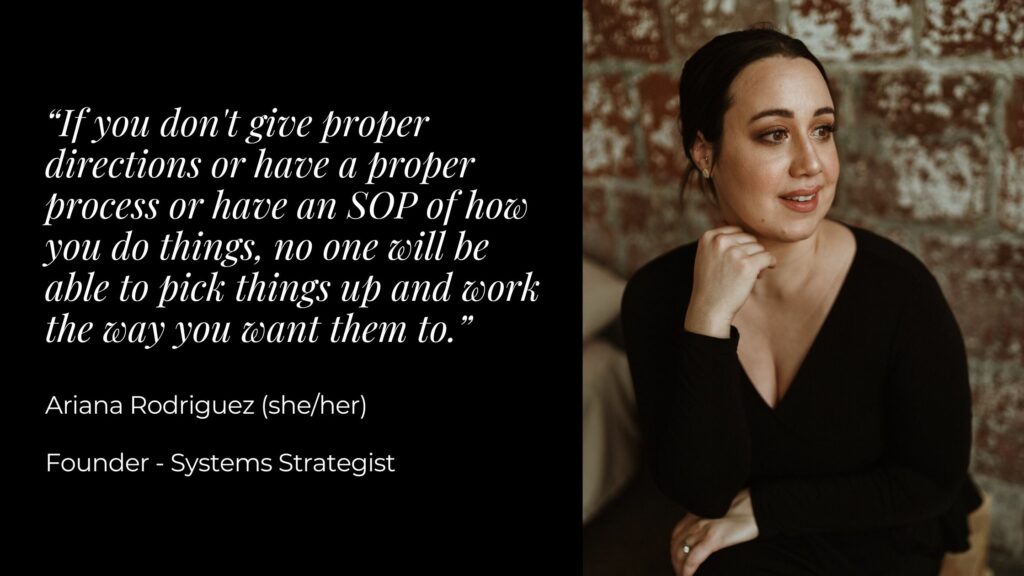
Speaker bio
My mission is to empower and elevate mission-driven companies, particularly those led by BIWOC (Black, Indigenous, Women of Color), by providing them with the operational foundations and C-suite level support they need to thrive. Recognizing that these essential resources are often out of reach for those who need them most, I’ve dedicated my brand to bridging this gap, translating my unique skills in tech solutions and operational strategy into accessible and sustainable support.
I envision a future where my brand touches millions of lives, enabling businesses to scale sustainably and make their indelible marks on the world. By focusing on those who are often overlooked and underserved, I aim to foster a more inclusive and equitable entrepreneurial landscape, where creativity, passion, and purpose are met with the tools and guidance needed to flourish.
Through my own journey from corporate boredom to creative fulfillment, and my personal understanding of the challenges faced by first-generation entrepreneurs and those with ADHD, I’ve cultivated a compassionate approach that resonates with my clients. My mission is not just about business growth; it’s about building healthy businesses that don’t burn out their owners, allowing them to live their ideal lives and contribute positively to the world.
In essence, my mission is to change the world by changing the way businesses operate, ensuring that those with vision and drive have the support they need to realize their dreams. It’s about simple solutions, empathy, and a belief that everything is figureoutable with enough time and patience. It’s about creating a legacy as a compassionate trailblazer, making a difference one business at a time.

